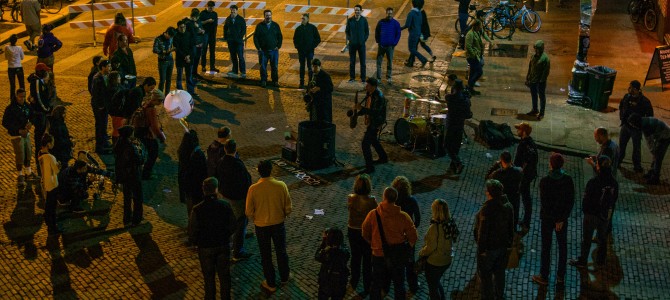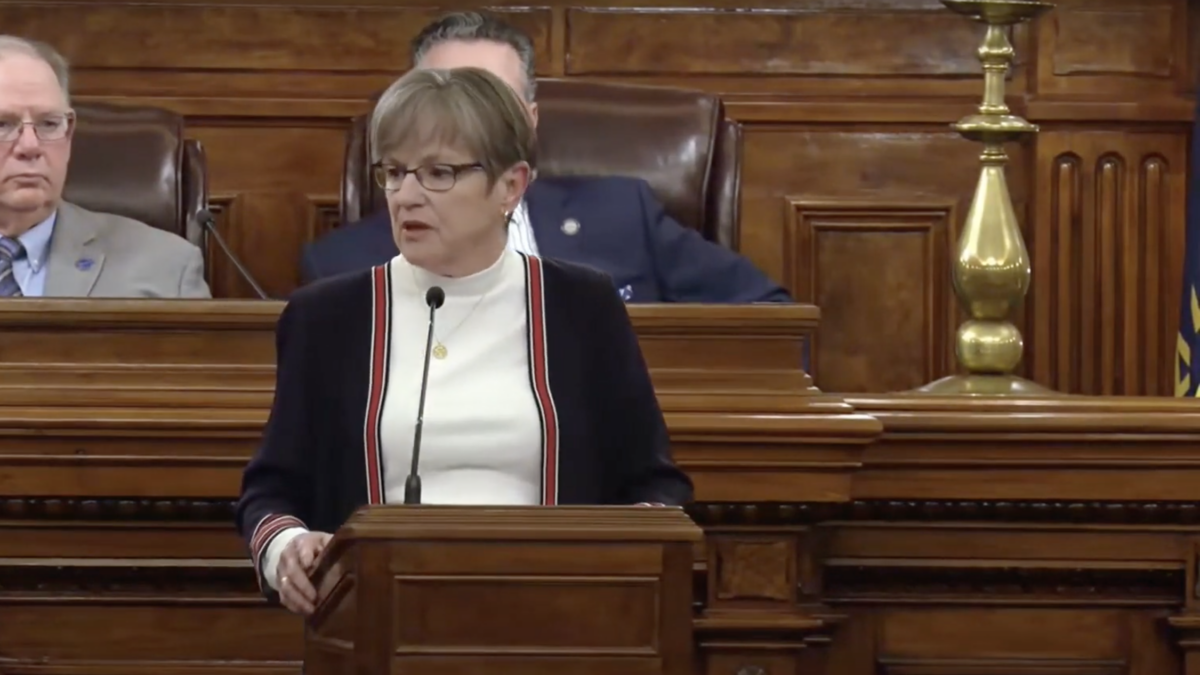
At the first SXSW music festival in 1987, wristbands were $10 and only 15 venues accepted them. Although more than 170 bands were booked, organizers didn’t think the festival would attract much attention from music labels in New York and Los Angeles. Roland Swenson, festival co-founder and former staffer at the Austin Chronicle (now managing director of SXSW), convinced his bosses—then-editor Louis Black and publisher Nick Barbaro—to go through with it by emphasizing the local and regional feel of the would-be festival:
[I]n a moment of inspiration, I said, ‘We don’t have to get those people. We can just invite some bands and music people from the area—Dallas, New Orleans, Houston. Get some other alternative papers like The Dallas Observer to sponsor it. Have a day or so of sessions and showcases, and then conclude with a big Sunday barbecue and softball game.
To their surprise, more than 700 people showed up for the first SXSW, including reps from major record labels and publishing companies on the coasts. A unique kind of music festival was born: part industry showcase, part celebration of regional bands ready for broader exposure.
Things have changed a lot since those heady days—not just for SXSW but also for Austin, which is now the fastest-growing metropolitan center in the country, even as the festival has ballooned to more than 100 times its original size. A decade ago you would probably have been just as likely to hear old-timers grumbling that SXSW had gotten out of hand as you are today. Still, something seems different.
The scope and tone of the affair, as The New York Times’ Jon Pareles noted, has started to feel corporate, partly because companies want to cash in on SXSW’s assumed authenticity—“ the reason Jimmy Kimmel broadcast his late-night talk show from Austin during the festival, and the reason snack-food and cellphone companies plastered their logos and faux-viral hashtags all over the place.” Whatever it used to be, SXSW has become, among other things, a branding free-for-all—more of a Coachella dropped into the heart of a city than a music and film festival meant to showcase unknown or up-and-coming talent. Between huge planned performances by Kanye West and Jay Z, Lady Gaga’s Doritos-sponsored spectacle at Stubb’s BBQ, and the ubiquitous presence of in-your-face corporate branding schemes, SXSW 2014 felt like it had gone too far before it had even begun.
Then two people were killed and 23 injured in a grisly hit-and-run outside a SXSW venue Wednesday night. The next morning, festival organizers had to decide whether the show would go on, and to what extent. They decided, somehow unsurprisingly, that it would basically go on uninterrupted—not because this was a decent or tactful thing to do, which it was not, but because they didn’t really have a choice. A statement from SXSW the next day explained: “To avoid confusion we plan to carry on with our scheduled daytime events at the Austin Convention Center in order to serve our tens of thousands of participants during this tragic time.” Austin police cautioned that there was no way safely to cancel events at Mohawk and Cheer Up Charlie’s, the venues in front of where the fatal hit-and-run took place, because thousands of people had already planned to attend them. With the city’s downtown already bursting at the seams, what was anyone supposed to do? If SXSW was too big to control, it was also too big to cancel.
Some, like Texas Monthly’s Dan Soloman, saw a silver lining in the way everyone soldiered on, calling Thursday night’s shows by Lady Gaga and Harlem hip hop collective A$AP Mob, “life-affirming for those in attendance.” That’s nice, but Solomon then veers into a revealing passage about the point of art and music, which invites a discussion of the point of the festival:
SXSW is a festival of music, and art, and community, too—and those are the things that help people cope with the senselessness of death and violence and tragedy… So yes, the brands were still present, but the focus appeared to be on the bands and the rappers and the films, and all of the artistic, creative things that people take comfort in when the world is harsh.
Walking through SXSW this year, it didn’t feel like the focus was on the bands and the “creative things” they were doing. The focus seemed to be on the impossibly chaotic spectacle itself and the inescapable corporate brands that glommed onto it. Not that there’s anything necessarily wrong with corporate branding, but the question is one of emphasis and attention and the purpose of great music.
After all, art—including pop music that rises to the level of art—is not ultimately a refuge or an escape from the harshness of the world, or even from death and violence and tragedy; it is rather a profound way of grappling with and accepting the reality of these things, not just to find a way through them but also to try and understand them. So far from being “things” that “people take comfort in,” the best music and film should inform and expand our understanding of human nature and the purpose of life. Soloman writes as if music should be a massive distraction from complexity and trouble, which is what SXSW seems to have become but not, one hopes, what our best music must become.
Instead of being “life-affirming,” our collective response to the killings at SXSW was mostly to shrug and carry on—a response that itself became a macabre sign of the festival’s transformation into something that is about less than music, certainly less than community. True, there were genuine outpourings of goodwill and compassion that followed the tragedy—like when Phoenix indie folk band Jared & The Mill played in a hospital room for a young fan severely injured in the Wednesday night crash—but the unhinged, Bacchic tone of the festival didn’t change.
SXSW will no doubt endure. But what makes it special will no longer be what happens downtown, in the heart of the festival. Those days are over. The soul of the festival will survive in the small, makeshift house-shows in backyards throughout Austin’s neighborhoods. If there is any life-affirming music or art to be found at SXSW, this is where it will be.
The greatest SXSW show I ever saw was in someone’s backyard just north of the UT campus, in 2012. Josh T. Pearson, an enigmatic, fiery-eyed native Texas then living in Europe, played a solo, acoustic set of songs from his 2011 album, “The Last of the Country Gentleman.” By the end of the show, half the crowd had tears streaming down their faces. Pearson’s twelve-minute ballad, “Sweetheart I Ain’t Your Christ,” isn’t the kind of music that gives comfort or escape from the harshness of life. In his mumbled, haunted voice, Pearson sung the kind of song that first made people come to Austin from all over the world for SXSW:
And so you sing to me your songs
And how you hum your holy verse
And try to teach my tongue to talk
Cuz you think it’ll cure some curse
But that dust of death it’s dug too deep, to be sung or swept right off your sweet
heart that lost its beat out there trying to light up cut down fallen men like me
On Monday, Sandy Le, age 26, died in an Austin hospital from injuries sustained in the hit-and-run, bringing the death toll to three. Seven other people, including the fiancé of one of the deceased, remain hospitalized. We owe it to the memory of these people to do more than proclaim that SXSW must go on, full steam ahead, no matter what. But we also we also owe it to ourselves, our communities, and our music.









